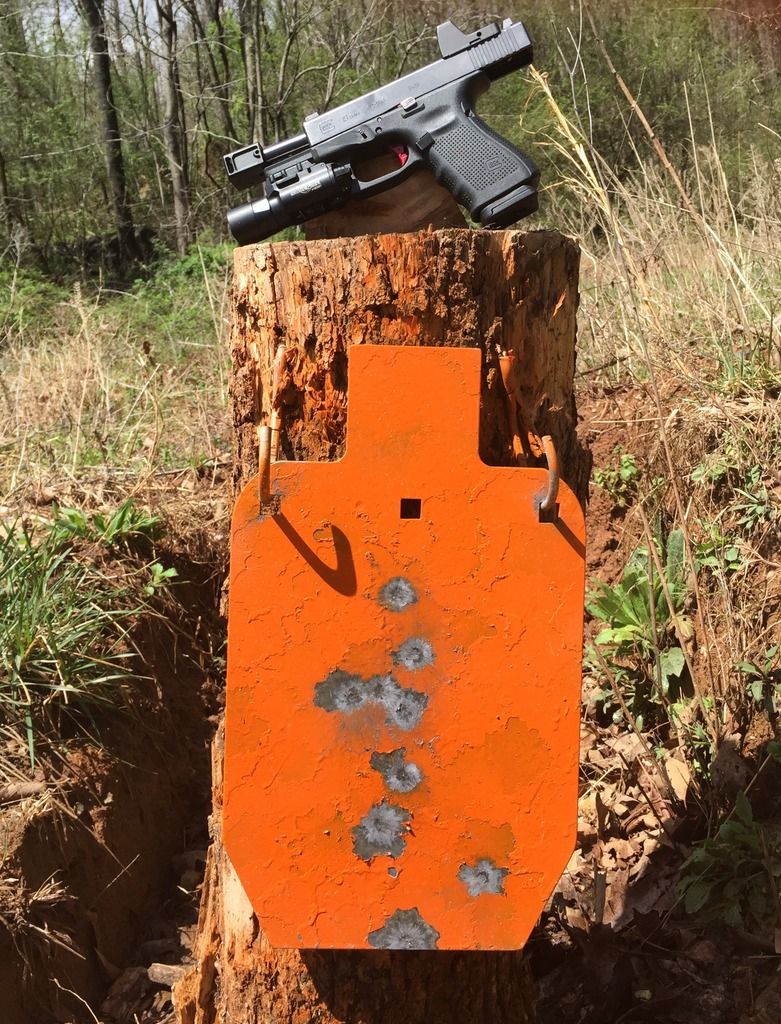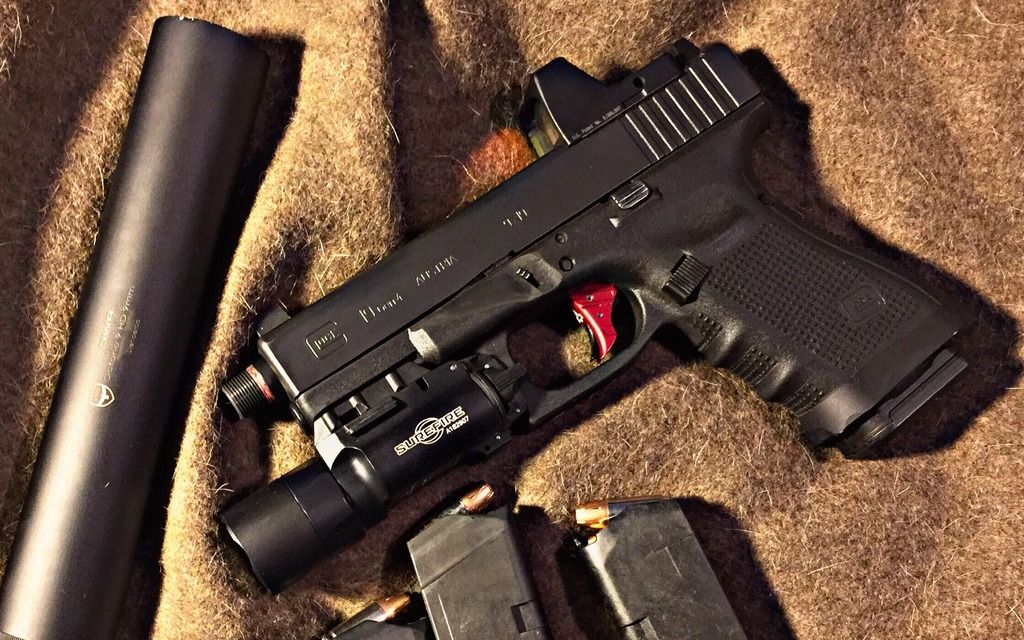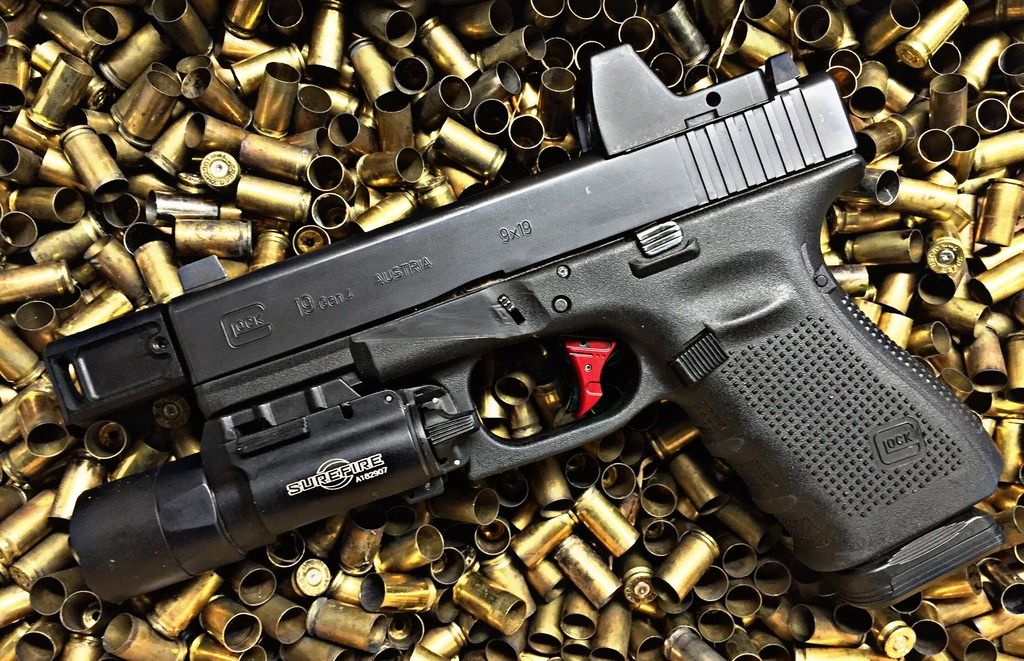That's how I figured comp's would work best too, but I could be mistaken, I don't really know.
I wanted to try some fast, light ammo because I figured high gas volume and low projectile weight would maximize the comp's effectiveness, as well as extending MPBR (while avoiding high POI at intermediate ranges).
So, bought a case of Federal 9BPLE. (I know, old technology) and put a few downrange for an initial proof-of-concept.
So, here's the pistol specs:
G19 Gen4
Silencerco barrel (4.5")
TBRCi microcomp
Trijicon RM02
SSVI Tyr trigger shoe
"-" connector
Stock RSA & internals
Anyway, I ran ten rounds over the chronograph. Here's the data from that:
Created: 04/06/17 12:58 PM
Description: Federal 9BPLE
Notes 1: 4.5" barrel G19
Distance to Chrono(FT): 10.00
Ballistic Coefficient: 0.120
Bullet Weight(gr): 115.00
Temp: 65 °F
# FPS FT-LBS PF
10 1330 451.77 152.95
9 1350 465.46 155.25
8 1355 468.91 155.82
7 1351 466.15 155.37
6 1351 466.15 155.37
5 1327 449.73 152.60
4 1334 454.49 153.41
3 1331 452.45 153.07
2 1341 459.27 154.21
1 1337 456.54 153.76
Average: 1340.7 FPS
SD: 10.3 FPS
Min: 1327 FPS
Max: 1355 FPS
Spread: 28 FPS
Shot/sec: 0.2
True MV: 1350 FPS
Maybe my chrono reads fast, or maybe I'm getting 1,350 fps. Dunno.
So, after pushing that data through a ballistics calculator, it looks like a 50 yard zero would yield a decent MPBR without significantly high POI at intermediate ranges.

After a few test shots at 50 yards, and fiddling with the RMR to try to get it pretty close, here's 10 rounds at 50 yards on a 1/2 size silhouette. A couple went kinda low...my bad. Though all things considered, I prefer vertical stringing to horizontal dispersion.

The near zero is ~somewhere~ around 10 yards.
With the comp, the +P+ felt like weak 115 range ammo, if that.
Perhaps this weekend I'll have time to refine the zero, and check POI at 25, 75, and 100, as well as see what the shot timer says about faster strings.
All in all, I'm pretty impressed with the Roland Special concept, and I ~think~ using light and fast ammo had benefits.
Seems to me that the RMR makes the concealed pistol useful to 100+ yards, and the comp makes it faster to shoot (accurately) with hotter ammo.
















